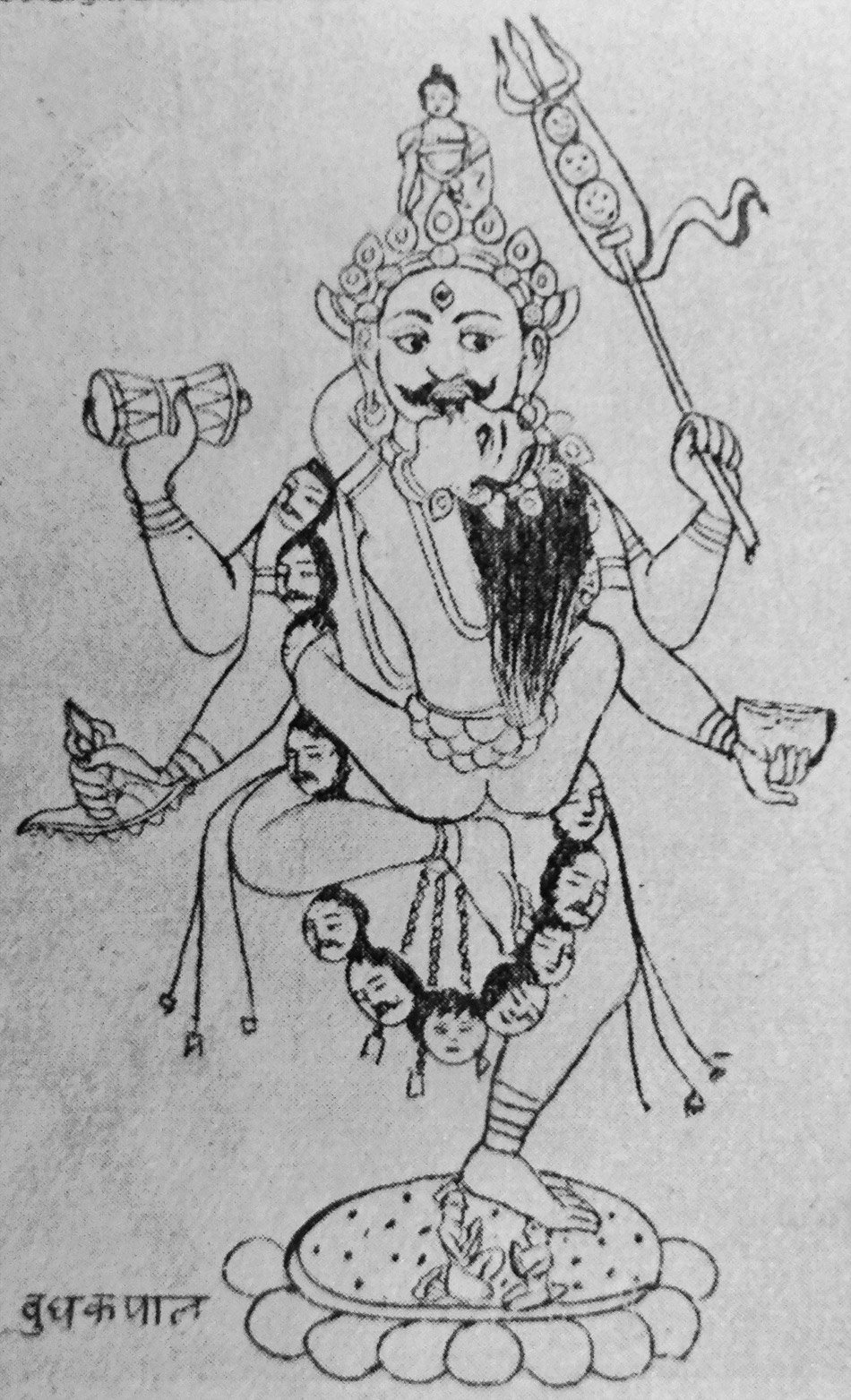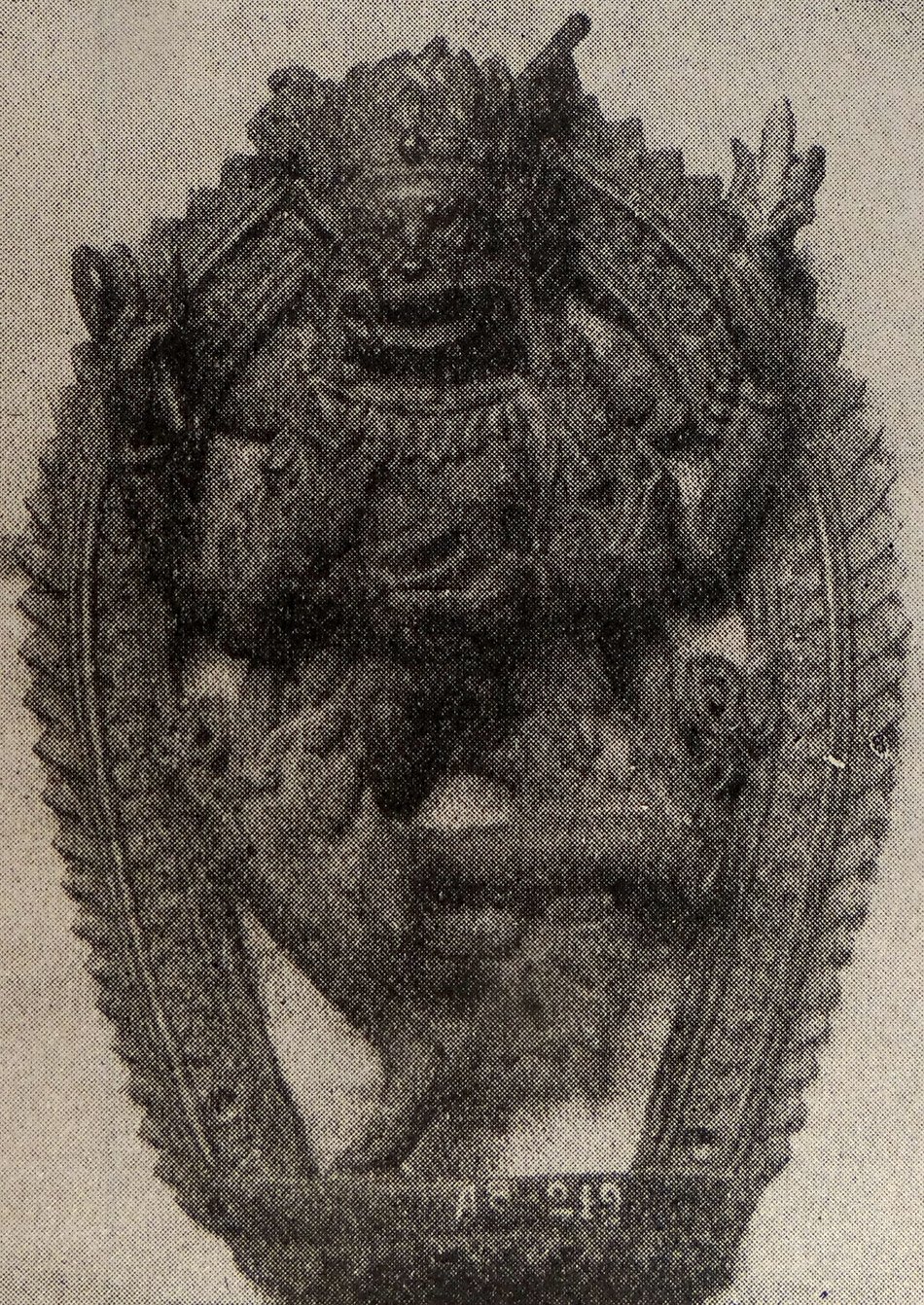The Indian Buddhist Iconography
by Benoytosh Bhattachacharyya | 1958 | 51,392 words | ISBN-10: 8173053138 | ISBN-13: 9788173053139
This page contains an iconography image of Emanations of Akshobhya: Buddhakapala and represents figure 126-127 of the book Indian Buddhist Iconography, based on extracts of the Sadhanamala English translation. These plates and illustrations represent either photographs of sculptures or line-drawing reproductions of paintings or other representations of Buddhist artwork.
Figure 126-127 - Emanations of Akṣobhya: Buddhakapāla
 Figure 126: Buddhakapāla |
 Figure 127: Buddhakapāla (Baroda Museum) |
Only one Sādhana gives the description of this god [Buddhakapāla], who is, in all probability, another form of Heruka. The Sādhana says that when Heruka is embraced by Citrasenā he gets the name of Buddhakapāla. He has one face and four arms, and his hands hold the Khaṭvaṅga, the Kapāla, the Kartri and the Ḍamaru ; he is embraced by his Prajñā, Citrasenā, and remains in yab-yum. He is slightly different from the four-armed variety of Heruka.
The same Sādhana later on gives the details of the Maṇḍala, and goes on to say that Buddhakapāla is surrounded by twenty-four goddesses arranged in three circles.
The first circle has:
- Sumālinī (blue) in the east,
- Kapālinī (yellow) in the north,
- Bhīmā (green) in the west,
- Durjayā (white) in the south.
The next circle has:
- Śubhamekhalā (east),
- Rūpiṇī (north),
- Jayā (west),
- Kauverī (south),
- Kāminī (north-east),
- Mahodadhī (north-west),
- Kāriṇī (south-west),
- Māriṇī (south-east).
The outermost circle has:
- Bhīmadarśanā (east),
- Ajayā (north),
- Śubhā (west),
- Ostārakī (south),
- Surakṣiṇī (north-east),
- Vikālarātri (north-west),
- Mahāyaśā (south-west),
- Sundari (south-east).
Besides these, there are the four guardians of gates:
Excepting the four deities of the innermost circle, all the goddesses have blue colour two arms, one face, ornaments of bones, brown hair rising upwards but no garlands of heads. They carry the Kapāla in the left and the Kartri in the right, and dance in the Ardhaparyaṅka attitude.
Fig. 126 illustrates a Nepalese drawing of the principal god in the embrace of his Śakti Citrasenā but without attendants. Buddhakapāla is represented in the Chinese collection at Peiping. He is also represented singly in a remarkable statuette in the Baroda Museum. (Fig. 127).
Colour: blue;
Arms: four;
Śakti: Citrasenā;
Āsana: dancing in ardhaparyaṅka;
